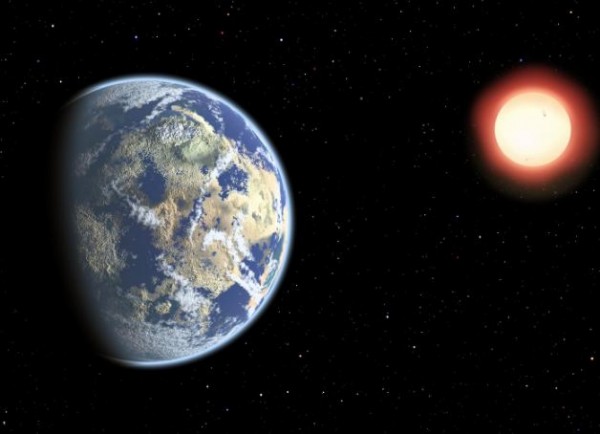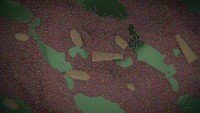New Theory says Intelligent Life Evolved on Earth too Fast Compared to the Rest of the Universe
| Arthur Dominic Villasanta | | Aug 03, 2016 05:20 AM EDT |
(Photo : Christine Pulliam (CfA)) A red dwarf star orbited by a pair of habitable planets. Because red dwarf stars live so long, the probability of cosmic life grows over time. As a result, Earthly life might be considered "premature."
Life on Earth was born prematurely and this new hypothesis is being used to explain why we haven't found signs of intelligent life in the Universe despite searching for it for over half a century.
Put in another way, this theory by Avi Loeb of the Harvard-Smithsonian Center for Astrophysics says we're probably the most intelligent life form out there. But again, there are parallel Universes that just might be inhabited by life forms more technologically advanced than ours.
Like Us on Facebook
Loeb's new theory suggests life on Earth is actually premature from a cosmic perspective, that is.
"If you ask, 'When is life most likely to emerge?' you might naively say, 'Now,'" said Loeb.
"But we find that the chance of life grows much higher in the distant future."
What scientists agree on is that life as we know it first became possible after the first stars seeded the cosmos with life-giving elements like carbon and oxygen some 30 million years after the Big Bang, which took place 13.8 billion years ago. Many scientists also agree life will end 10 trillion years from now when the last stars fade away and die.
Loeb and his colleagues considered the relative likelihood of life between these two boundaries.
The dominant factor proved to be the lifetimes of stars. The higher a star's mass, the shorter its lifetime. Stars larger than three times the sun's mass will die before life on their planets has a chance to evolve.
Conversely, the smallest stars weigh less than 10 percent as much as the Sun. They will glow for 10 trillion years, giving life ample time to emerge on any planets they host.
As a result, the probability of life grows over time. In fact, the chances of life are 1,000 times higher in the distant future than now.
"So then you may ask, why aren't we living in the future next to a low-mass star?" says Loeb.
"One possibility is we're premature. Another possibility is that the environment around a low-mass star is hazardous to life."
Although low-mass, red dwarf stars live for a long time, they also pose unique threats. In their youth they emit strong flares and ultraviolet radiation that could strip the atmosphere from any rocky world in the habitable zone.
To determine which possibility is correct -- our premature existence or the hazard of low-mass stars -- Loeb recommends studying nearby red dwarf stars and their planets for signs of habitability.
Future space missions like the Transiting Exoplanet Survey Satellite and James Webb Space Telescope should help to answer these questions.
Tagslife, Earth, Avi Loeb, Harvard-Smithsonian Center for Astrophysics
©2015 Chinatopix All rights reserved. Do not reproduce without permission
EDITOR'S PICKS
-

Did the Trump administration just announce plans for a trade war with ‘hostile’ China and Russia?
-

US Senate passes Taiwan travel bill slammed by China
-

As Yan Sihong’s family grieves, here are other Chinese students who went missing abroad. Some have never been found
-

Beijing blasts Western critics who ‘smear China’ with the term sharp power
-

China Envoy Seeks to Defuse Tensions With U.S. as a Trade War Brews
-

Singapore's Deputy PM Provides Bitcoin Vote of Confidence Amid China's Blanket Bans
-

China warns investors over risks in overseas virtual currency trading
-

Chinese government most trustworthy: survey
-

Kashima Antlers On Course For Back-To-Back Titles
MOST POPULAR
LATEST NEWS
Zhou Yongkang: China's Former Security Chief Sentenced to Life in Prison

China's former Chief of the Ministry of Public Security, Zhou Yongkang, has been given a life sentence after he was found guilty of abusing his office, bribery and deliberately ... Full Article
TRENDING STORY

China Pork Prices Expected to Stabilize As The Supplies Recover

Elephone P9000 Smartphone is now on Sale on Amazon India

There's a Big Chance Cliffhangers Won't Still Be Resolved When Grey's Anatomy Season 13 Returns

Supreme Court Ruled on Samsung vs Apple Dispute for Patent Infringement

Microsoft Surface Pro 5 Rumors and Release Date: What is the Latest?













